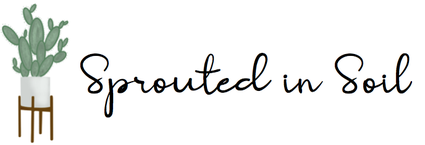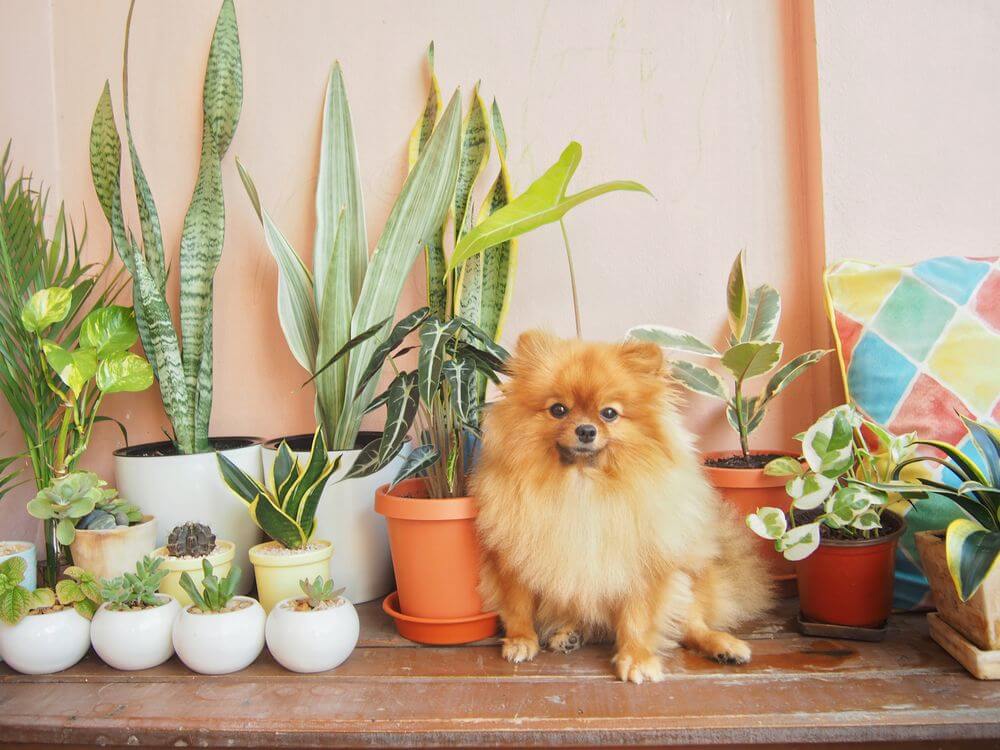Who doesn’t want a furry friend to come home to and a stylish, unique space full of eye-catching plants? Luckily for those of us who want both, most succulents are safe for cats, dogs, and other common pets!
Those of you who are pet lovers know that our animal friends (especially cats and dogs) like to sniff, rub, lick and sometimes even eat whatever is in front of them. This list will provide you with a handful of stunning non-toxic succulents and plants that you can safely keep if you have pets.
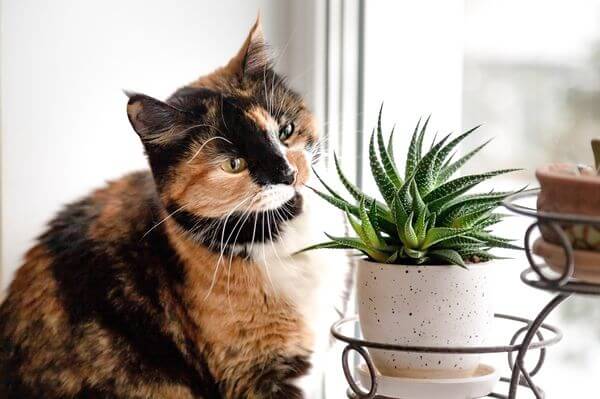
Echeveria
The first 4 succulents on this list are from the Echeveria genus. Echeveria are flowering succulents native to Mexico, Central America and parts of South America that grow on short stems with fleshy leaves. These characteristic leaves grow in a rosette pattern and come in almost any color, texture and shape imaginable. Bell-shaped, colorful flowers grow on long stems that rise high above the rosette. Echeveria are easy to grow, are drought-hardy and, most importantly, pet safe succulents!
1. Echeveria ‘Perle von Nurnberg’
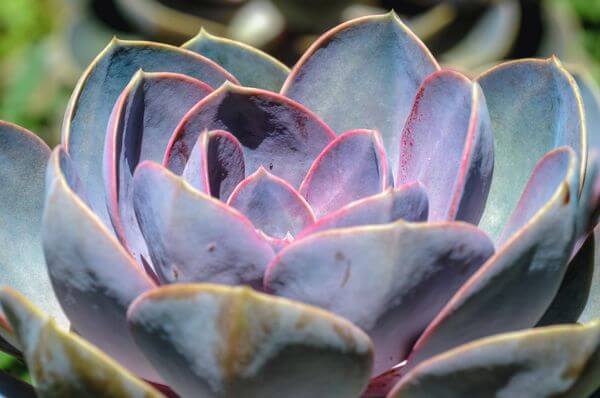
This beautiful succulent boasts large tear shaped leaves that are a silvery blue-green with a dusting of purple that can be made more intense if planted in direct sunlight. ‘Perle von Nurnberg’ grows extremely fast and is an easy succulent to propagate. Plant in well-draining soil and water sparingly to keep this succulent looking its best.
2. Echeveria harmsii ‘Ruby Slippers’
Aptly nicknamed ‘Ruby Slippers’ for the deep magenta color seen on the tips of its paddle shaped leaves, Echeveria harmsii is an example of how unique this genus can be! With thinner leaves than most other Echeveria, ‘Ruby Slippers’ is covered in a fine, fuzzy covering of silvery hairs. This velvety covering is not only eye-catching, but provides the plant with protection from the extreme sunlight it would receive from its native region in Mexico.
3. Echeveria runyonii ‘Topsy Turvy’

‘Topsy Turvy’ is a pet safe succulent that has wavy, silver/green leaves that are covered with a waxy coating, giving the plant a frosted look. This species of Echeveria doesn’t grow tall, with a maximum height of 3 inches to 5 inches, but can grow up to 8 inches wide. Because of this, it is a great choice to use as a filler in arrangements that have taller growing plants, to fill in the gaps! Like all Echeveria, ‘Topsy Turvy’ produces new offsets, also known as ‘Hens and Chicks’ at the base of mature plants. These offsets, or chicks, can be gently separated and transplanted to new pots!
4. Echeveria ‘Minima’
This dainty succulent is known for its miniature size and the great contrast between its two colors, mint and red. Like ‘Topsy Turvy’, the leaves on Echeveria ‘Minima’ are covered with a protective waxy coat, giving the plant an opalescent gleam. It too produces numerous offsets that will continue to grow into large, thick clusters around the mature plant. For ‘Minima’ to keep its bright colors, it must be planted in a window that receives around six hours of direct sunlight daily.
Sedum
Sedum is another genus of succulents that is safe for cats and dogs. There are approximately 500 species of Sedum and can be categorized into those that grow tall or upright and those that grow low and spread. Unlike Echeveria, most Sedum are tolerant of frost and can be grown outside in places that experience cold, snowy winters.
5. Sedum oaxacanum
S. oaxacanum is a taller species of Sedum that, once tall enough, grows in a beautiful trailing pattern perfect for hanging baskets. To keep S. oaxacanum from becoming sparse, grow in an area that receives full sun for the majority of the morning and into the early afternoon. If grown in a garden with other plants, be sure they all require minimal watering to avoid damaging your Sedum.
6. Sedum reflexum ‘Blue Spruce’
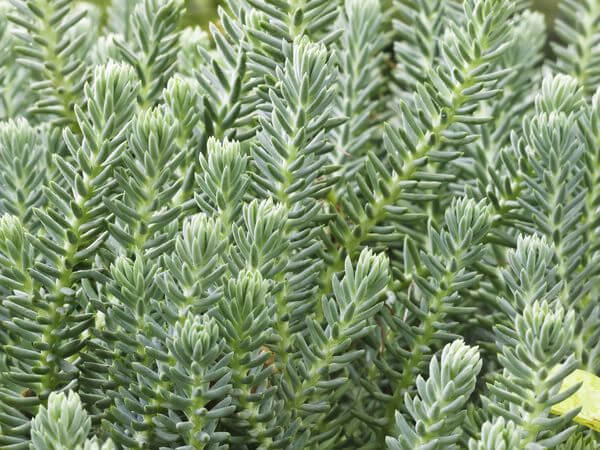
Another tall growing species, ‘Blue Spruce’ leaves and stems are reminiscent of those of a pine tree. The leaves are a light greenish blue in the warmer months and a light salmon pink in the cooler parts of the year. ‘Blue Spruce’ is an extremely cold hardy species as it is able to tolerate temperatures as cold as -30°F. As the months become warmer, this pet friendly succulent grows quickly and produces yellow flowers that are sure to bring bees and butterflies to your yard.
7. Sedum dasyphyllum
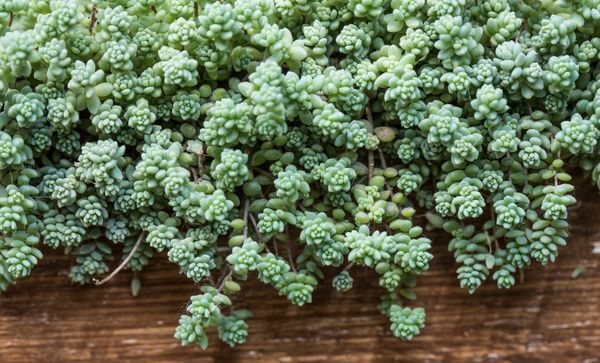
S. dasyphyllum is a low-growing Sedum with bunches of tiny, round leaves. Because the leaves grow so close together, S. dasyphyllum can create a carpet-like covering of your garden. Colors vary from a silvery aquamarine to a light lavender when grown in full sun. S. dasyphyllum can be planted in the ground but, for a more unique look, can be planted in stone walls or on green roofs!
8. Sedum album chloroticum
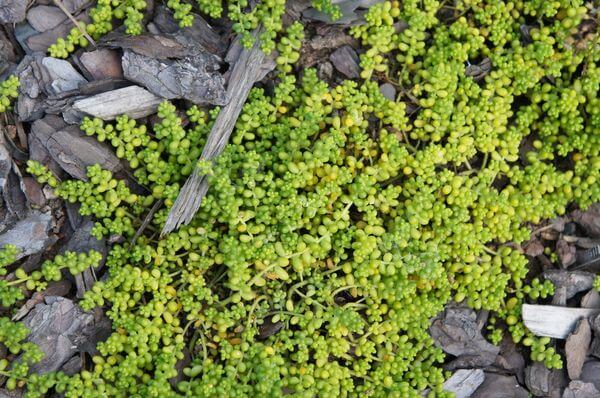
This pet safe succulent has small, chubby leaves that are shaped like Jelly Beans. It is another low growing succulent that is a great alternative to grass, in areas that have dry, rocky soil and are exposed to bright, full sun. Not only is it a good choice for pet owners because of its non-toxic nature, it can also hold up to being tread upon by many feet! An abundance of white flowers bloom in the summertime on a background of vivid, lime green leaves.
Sempervivum
Another cold hardy genus of succulents that are safe for cats and dogs is Sempervivum. These succulents grow in a rosette shape like Echeveria but their leaves are much thinner, have a sharper point and are rimmed with small, razor-like teeth. Sempervivum show off their change in color when weather begins to get cooler, unlike many other succulents that do this during warm, sunny weather.
9. Sempervivum arachnoideum

This species of Sempervivum has been bred into numerous different varieties that differ in size and color. The one characteristic that is constant between all varieties is the quirky, unique cobweb covering that is laced between the leaves. Like all Sempervivum, S. arachnoideum, or ‘Cobweb Hens and Chicks’, grows in clumps, creating large mounds made up of many individual plants.
10. Sempervivum ‘Bernstein’
S. ‘Bernstein’ is a small Sempervivum succulent that is safe for cats and dogs. The beautiful peachy orange color that turns to a dark burgundy in full sun more than makes up for this succulent’s small size. Always plant Sempervivum in gravelly, well-draining soil. If you live in an area where temperatures consistently rise above 85°F, be sure to plant S. ‘Bernstein’ in a shadier spot in your garden.
11. Sempervivum ‘Bronco’
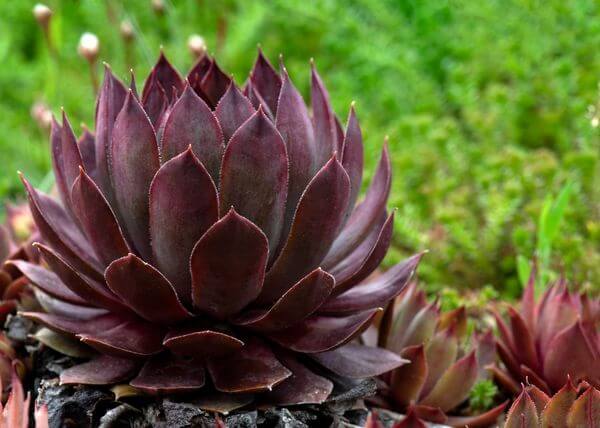
While all species of Sempervivum change colors throughout the year, S. ‘Bronco’ may display one of the most dramatic transformations. During winter months, leaves will be a deep, rich burgundy purple. At other times of the year, you will see this plant have yellowish-red leaves that will then turn to a green with red tips.
Haworthia
Haworthia is a genus of succulents that prefers indirect light. These low light succulents sport translucent leaves, which is a mechanism that has evolved to allow these succulents to thrive in shaded areas. They do not do well in the cold, so protect these succulents from temperatures below freezing.
12. Haworthia fasciata ‘Zebra Plant’
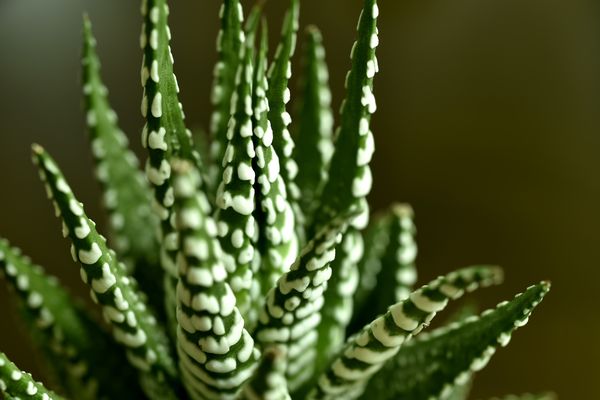
Like all other Haworthia, the ‘Zebra Plant’ is native to South Africa. With a growth pattern similar to that of aloe (which can be toxic to pets), H. fasciata leaves are a deep, emerald green with bumpy, horizontal white stripes. It is a great beginner succulent that does not require a lot of hands-on care. Water sparingly and place in an area of your house that receives bright but not direct sunlight.
13. Haworthia cymbiformis
This is another popular and easy-to-grow succulent. The green gradation on the chubby leaves lead to a translucent top, almost like a window, with light white stripes.
14. Haworthia cooperi
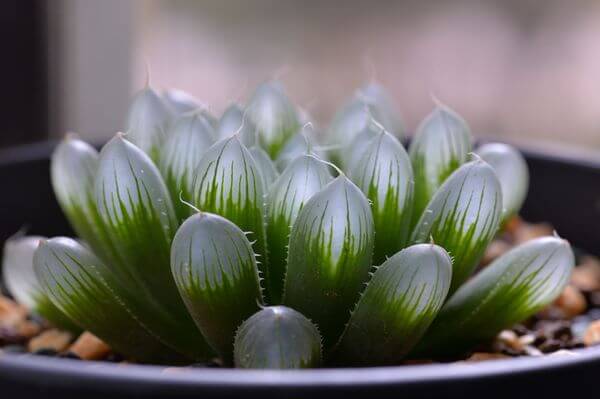
H. cooperi is one of my favorite species because it looks like something from a science fiction novel. The perfectly elliptical “bubbled” leaves grow in clumps, creating a pin cushion effect. Safe for cats and dogs, this succulent is a curiously perfect addition to a growing collection.
Graptosedum
Graptosedum, a hybrid of the genera Graptopetalum and Sedum, are wonderfully whimsical succulents that are safe for cats, dogs, and most other household pets. These succulents grow in a spiraling rosette shape around a central stem and come in the most dreamy of pastel colors. Most species of Graptosedum are not cold hardy, so it is important to bring these plants inside during the colder months.
15. Graptosedum ‘California Sunset’
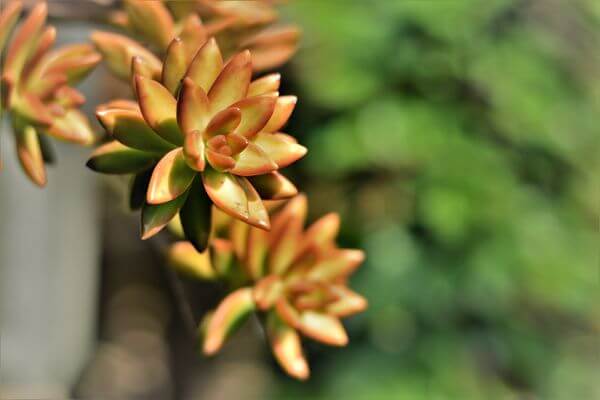
Just as its name suggests, this brilliant succulent mimics the array of colors that brighten the horizon during the golden hour of the evening. To bring out the most vivid colors, allow your Graptosedum to receive at least six hours of full sun per day.
16. Graptosedum ‘Alpenglow’
This succulent is also known as Graptosedum ‘Bronze’ for its warm rose gold tones. Yellow flowers appear in summertime. As your G. ‘Alpenglow’ matures, it will begin to bend and grow long, trailing stems that are perfect to use in hanging pots.
Tillandsia
Air plants, or Tillandsia, are another ideal plant to keep around the house that are pet safe! Keep in mind that while these are not succulents, they are nonetheless eye-catching. Succulents get their nutrients from growing in soil, while Tillandsia actually don’t need soil at all! They receive nutrients from the moisture and particles in the air. Tillandsia are low maintenance and require 2-3 waterings per week. Watering Tillandsia is very different from watering succulents. Completely submerge your air plant in a glass of water for 30 minutes. After the 30 minutes are up, gently shake off the excess water that has hidden between the leaves and place in an area that receives good airflow to prevent rot.
17. Tillandsia xerographica
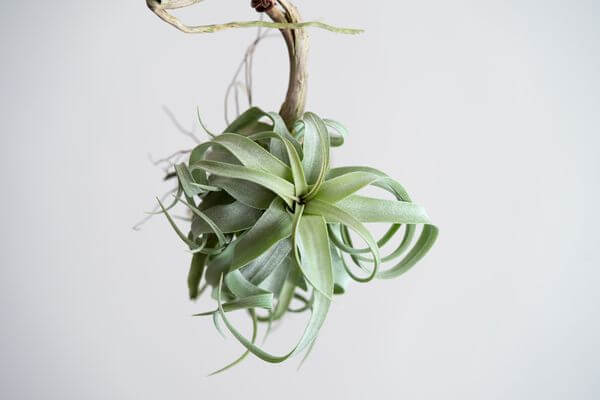
This is one of the more rare species of Tillandsia, so don’t be shocked by a higher price tag. The wide curling leaves are a pale silvery mint hue. They can grow to be ten inches wide. Tillandsia xerographica, because of its dense plume of whorling leaves, should be watered only once a week and needs to be in a place that gets ample airflow. This is a great pet safe plant to use as a centerpiece on a table or to place in a hanging pendant!
18. Tillandsia butzii
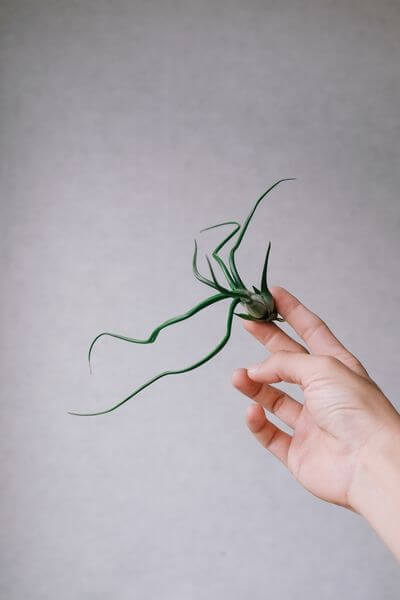
T. butzii is a thin, branching plant with a large bulbous base from which the thin leaves emerge. Leaves are a rich green while the base is a variegated purple/green. For a creative touch, use a wine cork to make a base on which this Tillandsia can sit; these can be made into magnets or hung from the top of windows.
19. Tillandsia filifolia
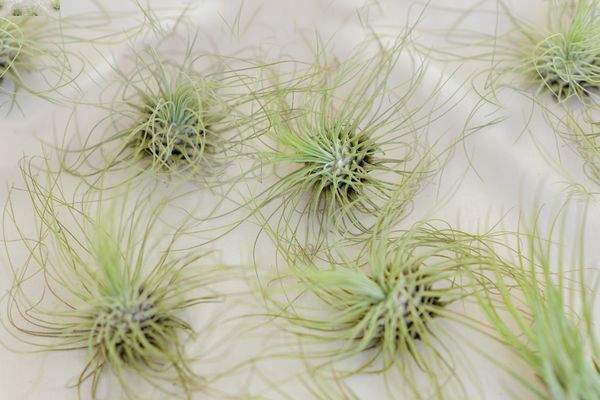
With lime green leaves dusted with silver, this air plant’s leaves are abundant and fan out like long grass in the wind. Like all air plant’s, this too is safe for cats and dogs. This is a slow grower so be patient while waiting for the stunning purple bloom that emerges from the center of the leaves.
Wrapping up
This list has shown that if you’re a plant owner and succulent collector, you can have your cake and eat it too! You can fill your home with these safe succulents for cats, dogs, and other pets without worrying about a potential disaster.
It’s important to note that while this list has been compiled using various resources to confirm that these succulents are non-toxic to pets, I cannot guarantee your pet’s safety if they consume one of the plants listed above. These plants are not part of your pets’ normal diet, and they all have the potential to cause health issues in rare circumstances. With that being said, if you suspect that your pet has eaten one of your succulents, please monitor him or her closely for any signs of distress and take them to your local vet immediately.
